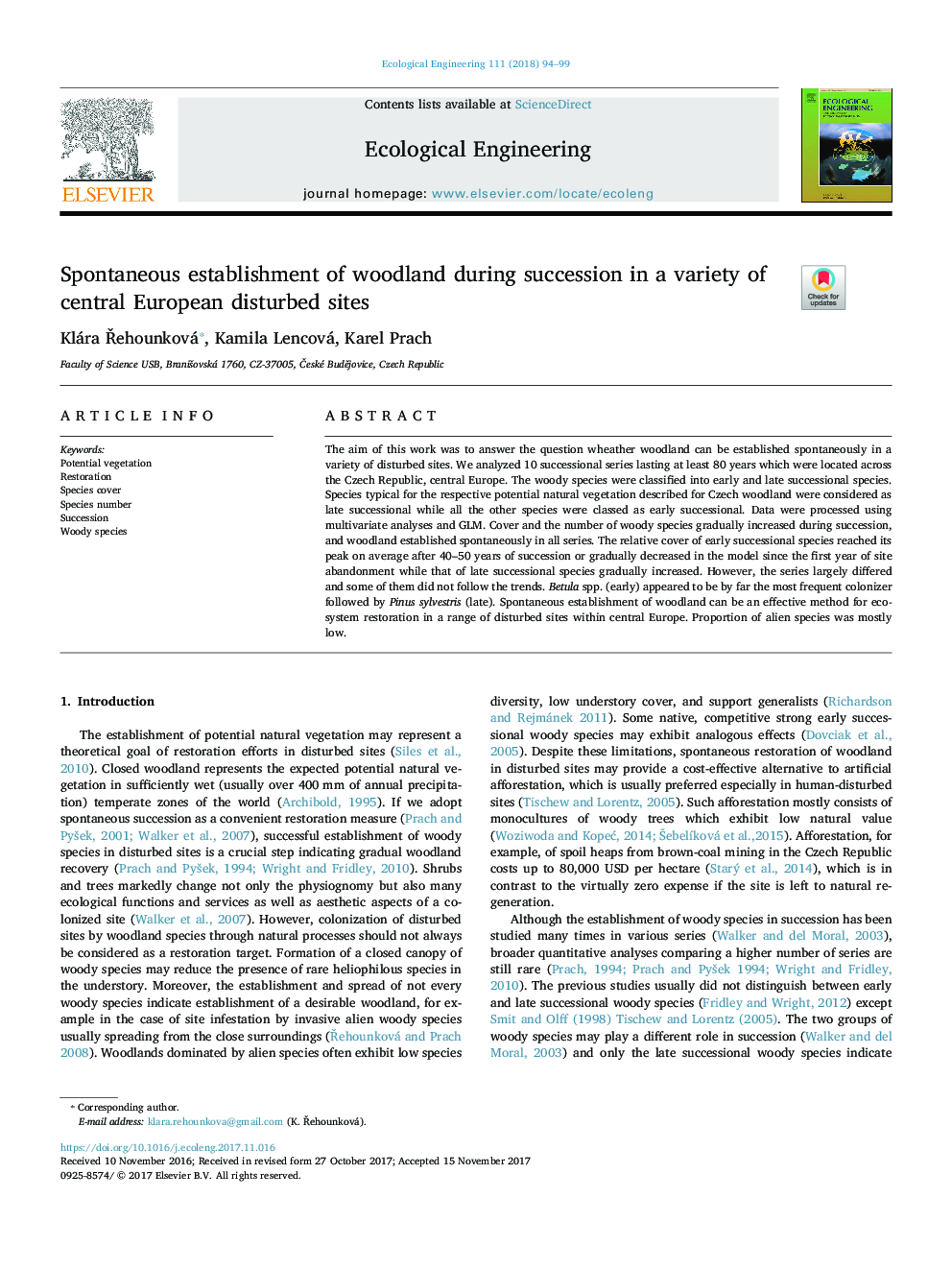| Article ID | Journal | Published Year | Pages | File Type |
|---|---|---|---|---|
| 8848099 | Ecological Engineering | 2018 | 6 Pages |
Abstract
The aim of this work was to answer the question wheather woodland can be established spontaneously in a variety of disturbed sites. We analyzed 10 successional series lasting at least 80 years which were located across the Czech Republic, central Europe. The woody species were classified into early and late successional species. Species typical for the respective potential natural vegetation described for Czech woodland were considered as late successional while all the other species were classed as early successional. Data were processed using multivariate analyses and GLM. Cover and the number of woody species gradually increased during succession, and woodland established spontaneously in all series. The relative cover of early successional species reached its peak on average after 40-50 years of succession or gradually decreased in the model since the first year of site abandonment while that of late successional species gradually increased. However, the series largely differed and some of them did not follow the trends. Betula spp. (early) appeared to be by far the most frequent colonizer followed by Pinus sylvestris (late). Spontaneous establishment of woodland can be an effective method for ecosystem restoration in a range of disturbed sites within central Europe. Proportion of alien species was mostly low.
Related Topics
Life Sciences
Agricultural and Biological Sciences
Ecology, Evolution, Behavior and Systematics
Authors
Klára Åehounková, Kamila Lencová, Karel Prach,
